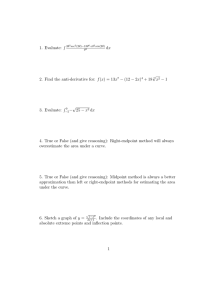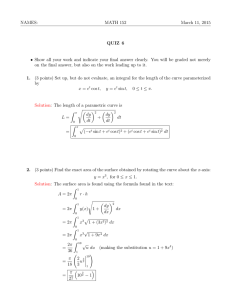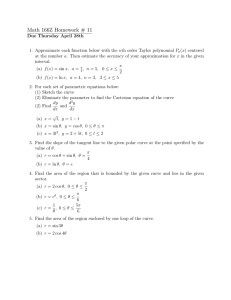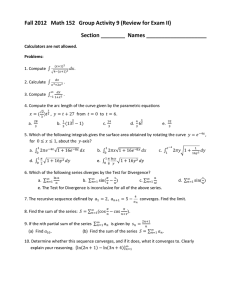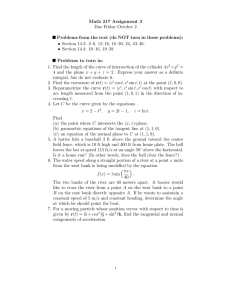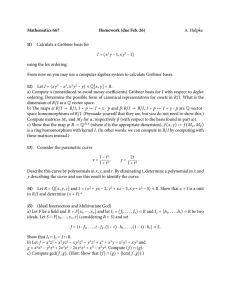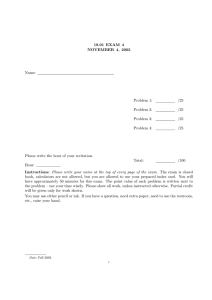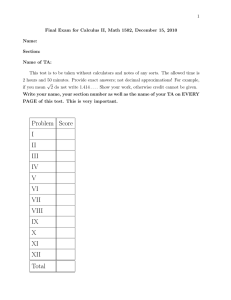Mathematics 567 Homework (due Apr 11) 42) A. Hulpke
advertisement
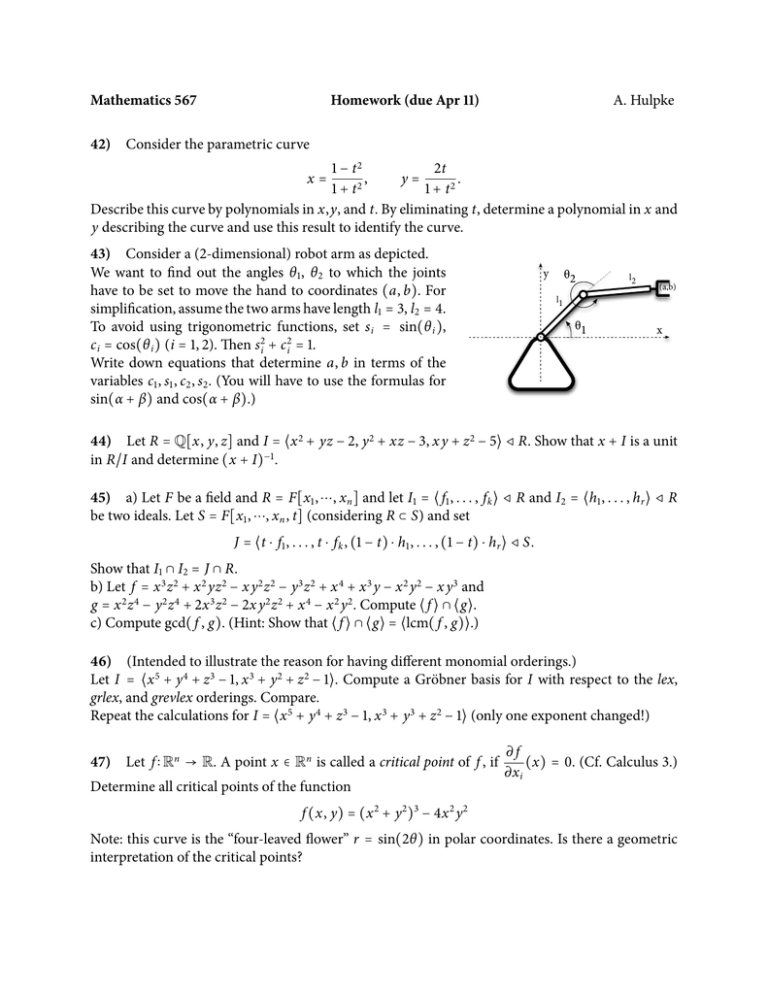
Mathematics 567 42) A. Hulpke Homework (due Apr 11) Consider the parametric curve 2t 1 − t2 , y= . 2 1+t 1 + t2 Describe this curve by polynomials in x,y, and t. By eliminating t, determine a polynomial in x and y describing the curve and use this result to identify the curve. x= 43) Consider a (2-dimensional) robot arm as depicted. We want to find out the angles θ 1 , θ 2 to which the joints have to be set to move the hand to coordinates (a, b). For simplification, assume the two arms have length l1 = 3, l2 = 4. To avoid using trigonometric functions, set s i = sin(θ i ), c i = cos(θ i ) (i = 1, 2). Then s 2i + c 2i = 1. Write down equations that determine a, b in terms of the variables c1 , s1 , c2 , s2 . (You will have to use the formulas for sin(α + β) and cos(α + β).) y θ2 l2 (a,b) l1 θ1 x 44) Let R = Q[x, y, z] and I = ⟨x 2 + yz − 2, y 2 + xz − 3, x y + z 2 − 5⟩ ⊲ R. Show that x + I is a unit in R/I and determine (x + I)−1 . 45) a) Let F be a field and R = F[x1 , ⋯, x n ] and let I1 = ⟨ f1 , . . . , f k ⟩ ⊲ R and I2 = ⟨h1 , . . . , hr ⟩ ⊲ R be two ideals. Let S = F[x1 , ⋯, x n , t] (considering R ⊂ S) and set J = ⟨t ⋅ f1 , . . . , t ⋅ f k , (1 − t) ⋅ h1 , . . . , (1 − t) ⋅ hr ⟩ ⊲ S. Show that I1 ∩ I2 = J ∩ R. b) Let f = x 3 z 2 + x 2 yz 2 − x y2 z 2 − y 3 z 2 + x 4 + x 3 y − x 2 y 2 − x y3 and g = x 2 z 4 − y 2 z 4 + 2x 3 z 2 − 2x y 2 z 2 + x 4 − x 2 y 2 . Compute ⟨ f ⟩ ∩ ⟨g⟩. c) Compute gcd( f , g). (Hint: Show that ⟨ f ⟩ ∩ ⟨g⟩ = ⟨lcm( f , g)⟩.) 46) (Intended to illustrate the reason for having different monomial orderings.) Let I = ⟨x 5 + y 4 + z 3 − 1, x 3 + y 2 + z 2 − 1⟩. Compute a Gröbner basis for I with respect to the lex, grlex, and grevlex orderings. Compare. Repeat the calculations for I = ⟨x 5 + y 4 + z 3 − 1, x 3 + y 3 + z 2 − 1⟩ (only one exponent changed!) 47) Let f ∶ Rn → R. A point x ∈ Rn is called a critical point of f , if Determine all critical points of the function ∂f (x) = 0. (Cf. Calculus 3.) ∂x i f (x, y) = (x 2 + y 2 )3 − 4x 2 y 2 Note: this curve is the “four-leaved flower” r = sin(2θ) in polar coordinates. Is there a geometric interpretation of the critical points?
